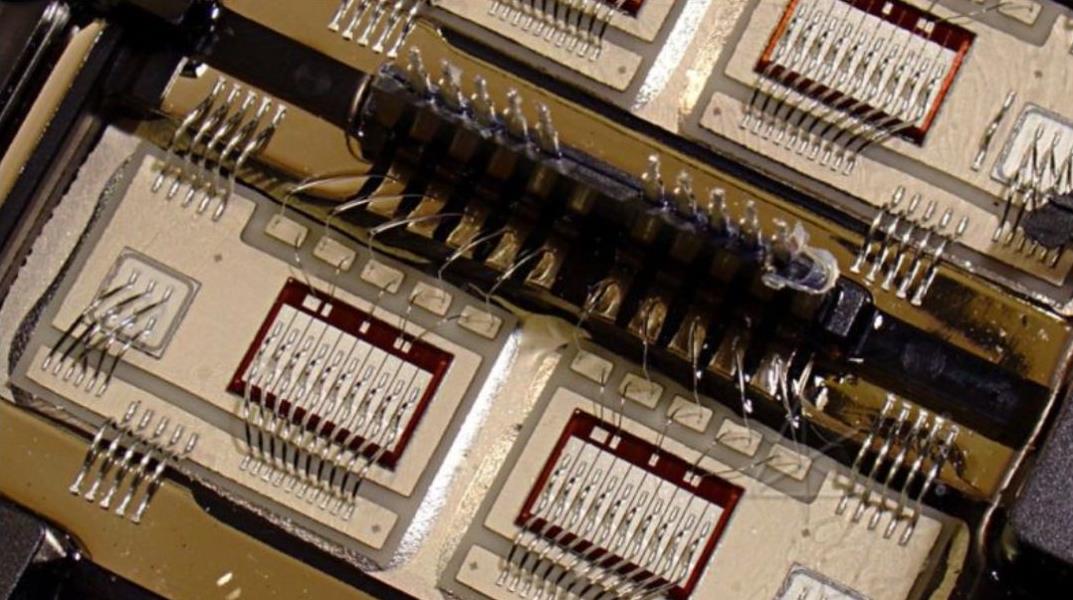After the copper clad laminate is processed to produce printed circuit boards, through holes, and assembly holes, various components are assembled. After assembly, in order to make the components reach the connection with each circuit of the PCB, it is necessary to carry out the welding process. Brazing processing is divided into three methods: wave soldering, reflow soldering and manual soldering. The solder connection of jack-mounted components generally adopts wave soldering; the brazed connection of surface-mounted components generally adopts reflow soldering; individual components and components are required by the installation process and individual repair welding, using separate manual (electrochromic) iron) welding.

1、Solder resistance of copper clad laminates
As
the substrate material of PCB, copper clad laminate is in contact with
high-temperature substances in an instant during brazing. Therefore, the
soldering process is an important form of "thermal shock" to the copper
clad laminate, and it is a test of the heat resistance of the copper
clad laminate. CCL guarantees its product quality during thermal shock,
which is an important aspect of evaluating the heat resistance of CCL.
At the same time, the reliability of the copper clad laminate during
welding is also related to its own performance indicators such as its
own pull-off strength, peel strength at high temperature, and heat and
humidity resistance. For copper clad laminate brazing processing
requirements, in addition to the conventional dip solder resistance
items, in recent years, in order to improve the reliability of copper
clad laminates in brazing, some application performance measurement and
assessment items have been added. Such as hygroscopic heat resistance
test (treatment for 3 hours, then do 260 ℃ dip soldering test),
hygroscopic reflow soldering test (reflow soldering test at 30 ℃, 70%
relative humidity for a specified time) and so on. Before the CCL
products leave the factory, the copper clad laminate manufacturer should
perform a strict dip solder resistance (also known as thermal shock
blistering) test according to the standard. Printed circuit board
manufacturers should also detect this item in time after the CCL enters
the factory. At the same time, after a PCB sample is produced, the
performance should be tested by simulating wave soldering conditions in
small batches. After confirming that this kind of substrate meets the
user's requirements in terms of dip soldering resistance, this kind of
PCB can be mass-produced and sent to the whole machine factory.
The
method for determining the dip solder resistance of copper clad
laminates is basically the same as my country International (GBIT
4722-92), American IPC standard (IPC-410 1), and Japanese JIS standard
(JIS-C-6481-1996). The main requirements are:
1) The method of arbitration determination is "floating soldering method" (the sample floats on the soldering surface);
2) The sample size is 25 mm X 25 mm;
3)
If the temperature measurement point is a mercury thermometer, it means
that the parallel position of the mercury head and tail in the solder
is (25 ± 1) mm; the IPC standard is 25.4 mm;
4) The depth of the solder bath is not less than 40 mm.
It
should be noted that the temperature measurement position has a very
important influence on the correct and true reflection of the dip solder
resistance level of a board. The general solder heating heat source is
at the bottom of the tin bath. The greater the distance (deeper) from
the temperature measurement point to the solder liquid surface, the
greater the deviation between the temperature of the solder liquid and
the measured temperature. At this time, the lower the liquid surface
temperature is than the measured temperature, the longer the foaming
time of the board with the dip solder resistance measured by the sample
float method.
2、Wave soldering processing
In the wave
soldering process, the soldering temperature is actually the soldering
temperature, which is related to the type of soldering. Soldering
temperature should generally be controlled below 250 'c. The soldering
temperature is too low to affect the quality of soldering. As the
soldering temperature increases, the dip soldering time is relatively
significantly shortened. If the soldering temperature is too high, it
will cause blistering, delamination and serious warping of the circuit
(copper tube) or substrate. Therefore, the welding temperature should be
strictly controlled.
3、Reflow welding
Generally, the
temperature of reflow soldering is slightly lower than that of wave
soldering. The setting of reflow soldering temperature is related to the
following aspects:
1) The type of equipment for reflow soldering;
2) Setting conditions of line speed, etc.;
3) Type and thickness of substrate material;
4) The size of the PCB, etc.
The
reflow setting temperature is different from the PCB surface
temperature. Under the same reflow setting temperature, the surface
temperature of the PCB is also different due to the difference in the
type and thickness of the substrate material.During reflow
soldering, the heat resistance limit of the substrate surface
temperature where copper foil bulges (blistering) occurs will change
with the preheating temperature of the PCB and the presence or absence
of moisture absorption. It can be seen from Figure 3 that when the
preheating temperature of the PCB (the surface temperature of the
substrate) is lower, the heat resistance limit of the surface
temperature of the substrate where the bulging problem occurs is also
lower. Under the condition that the temperature set for reflow soldering
and the temperature of reflow soldering preheating are constant, the
surface temperature drops due to moisture absorption of the substrate.
4、Manual welding
When
repair welding or separate manual welding of special components, the
surface temperature of electrochromic ferrochrome is required to be
below 260 °C for paper-based copper clad laminates, and below 300 °C for
glass fiber cloth-based copper clad laminates. And try to shorten the
welding time as much as possible, the general requirement is that the
paper substrate is less than 3s, and the glass fiber cloth substrate is
less than 5s on printed circuit boards.